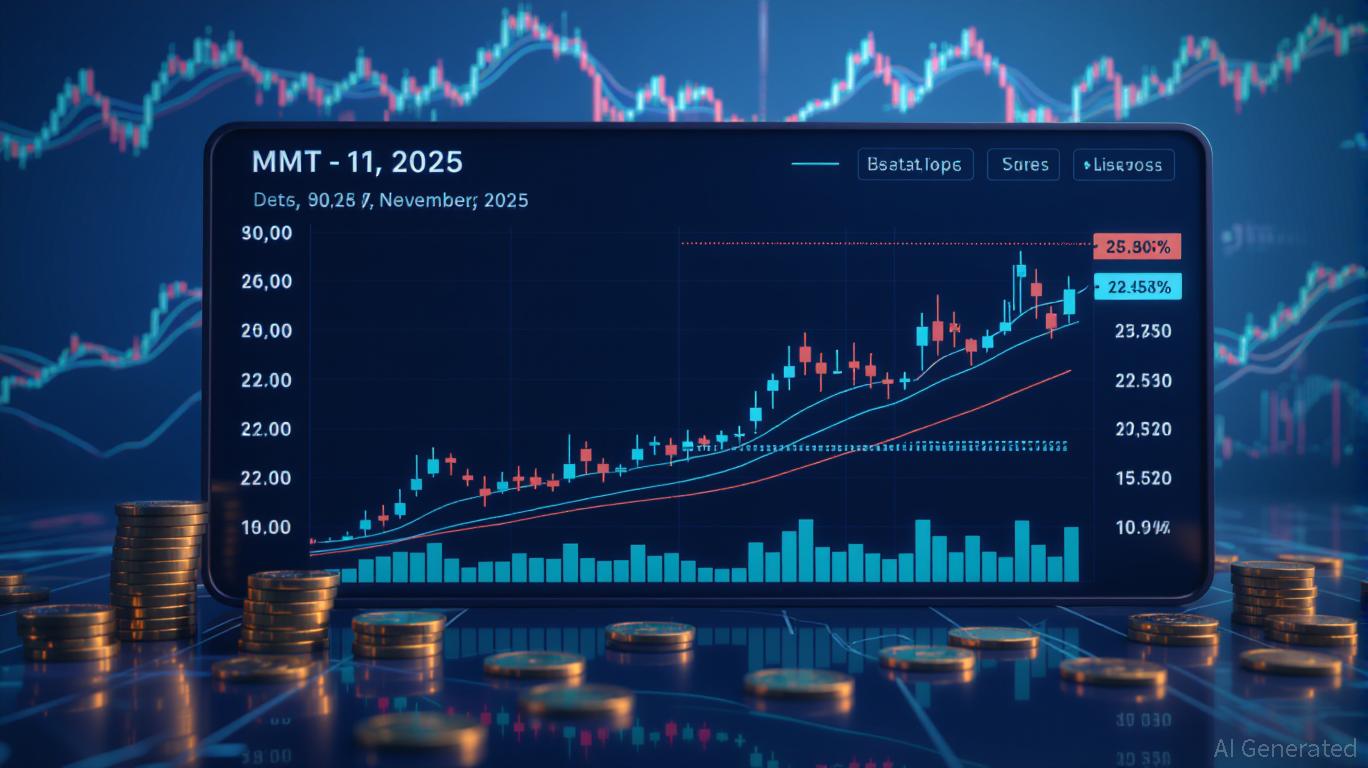MMT Value Forecast and Investor Outlook for November 2025: Evaluating Reliability During Economic Changes
- MMT token surged 1,300% in Nov 2025 due to Binance listings, airdrops, and institutional investments. - 1607 Capital increased MMT-linked fund stake by 84.7%, but dividend sustainability remains unclear. - Fed policy and missing inflation data (due to 2025 government shutdown) cloud macroeconomic alignment. - MMT's volatility ($4.40 to $2.54) highlights speculative nature despite structural catalysts. - Long-term credibility depends on macroeconomic clarity and Fed policy shifts, not just exchange-driven
Structural Catalysts: Listings, Airdrops, and Institutional Stakes
MMT’s rapid ascent in late October and November 2025 was primarily triggered by its debut on Binance, which
Institutional backing further enhanced the token’s attractiveness.
Macroeconomic Context: Fed Policy, Inflation, and Data Gaps
The Federal Reserve’s policy direction in late 2025 significantly influenced market outlook. With U.S. 10-year Treasury yields near 4.16%,
Modern Monetary Theory (MMT) itself has shaped discussions on fiscal and monetary policy. Supporters claim deficit spending can drive economic growth, while critics caution about inflation risks,
Market Volatility and Sentiment Analysis
Blockchain data highlights MMT’s pronounced volatility: the token climbed to $4.40 in late October 2025 before dropping to $2.54, with $109 million in futures positions—mainly shorts—being liquidated during the downturn. This dramatic movement highlights the speculative aspect of the token.
Nevertheless, the lack of macroeconomic data in November 2025 casts doubt on the token’s long-term legitimacy. Without dependable inflation statistics, investors have little basis to judge whether MMT’s valuation is grounded in economic reality or simply reflects exchange-driven liquidity and airdrop incentives.

Credibility Assessment: Structural Strength vs. Macroeconomic Uncertainty
Although MMT’s price rally is closely linked to exchange listings and institutional support, its connection to macroeconomic indicators is still uncertain. The token’s dependence on airdrop rewards and yield-focused tactics—rather than organic demand or alignment with economic fundamentals—points to a high level of short-term speculation. Additionally, the absence of official inflation data in November 2025 leaves investors unable to accurately compare MMT’s performance with broader economic patterns.
To establish lasting credibility, MMT must show consistent distributions and the ability to withstand changes in Federal Reserve policy.
Conclusion
The MMT token’s surge in November 2025 was primarily driven by structural factors—exchange listings, airdrops, and institutional involvement—rather than underlying macroeconomic strength. While these elements have fueled short-term appreciation, the token’s long-term viability depends on greater macroeconomic transparency, which is currently hindered by the government shutdown and missing data. Investors should remain cautious with MMT, weighing its speculative appeal against strategies that hedge against inflation or diversify risk.
Disclaimer: The content of this article solely reflects the author's opinion and does not represent the platform in any capacity. This article is not intended to serve as a reference for making investment decisions.
You may also like
How large a portion of the AI data center surge will rely on renewable energy sources?
Amazon satellite network receives a new name — and no longer emphasizes its low-cost promise
TechCrunch Mobility: The robotaxi growth that truly counts

Bitcoin News Update: Japan Strives to Foster Crypto Innovation While Enhancing Investor Safeguards Amid Regulatory Reforms
- Japan will reclassify cryptocurrencies as financial products under FIEA, enhancing investor protections and aligning with traditional securities regulations. - FSA proposes 20% capital gains tax, strict insider trading rules, and mandatory disclosures for 105 tokens to mitigate risks and ensure transparency. - Exchanges must provide detailed issuer and blockchain data, while banks may soon hold Bitcoin , reflecting Asia's push for tokenized finance infrastructure. - Regulatory challenges include complian
